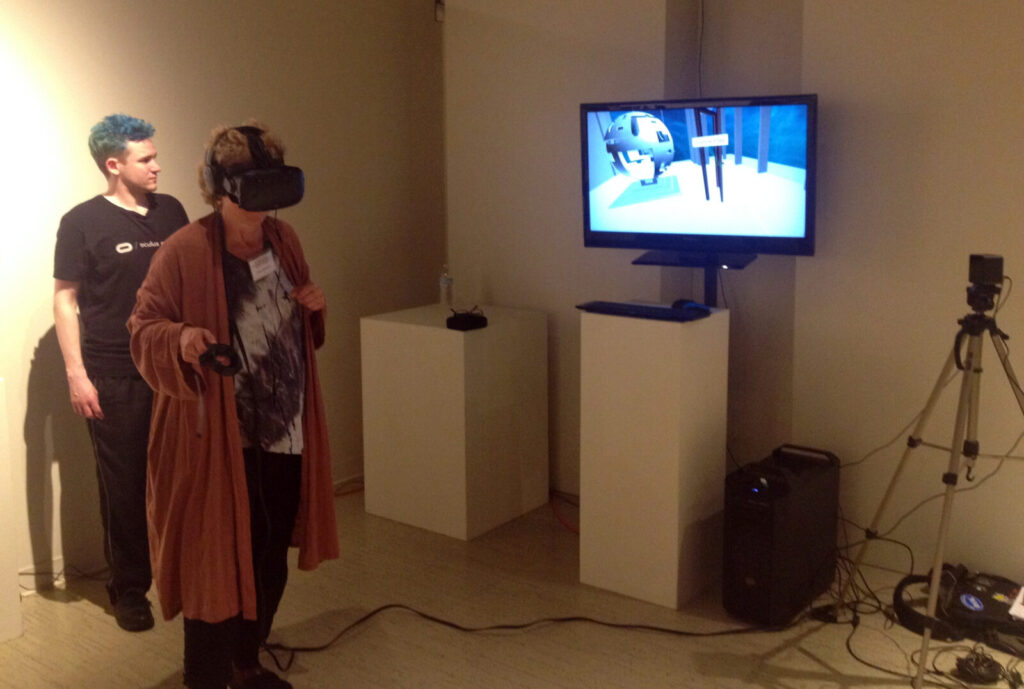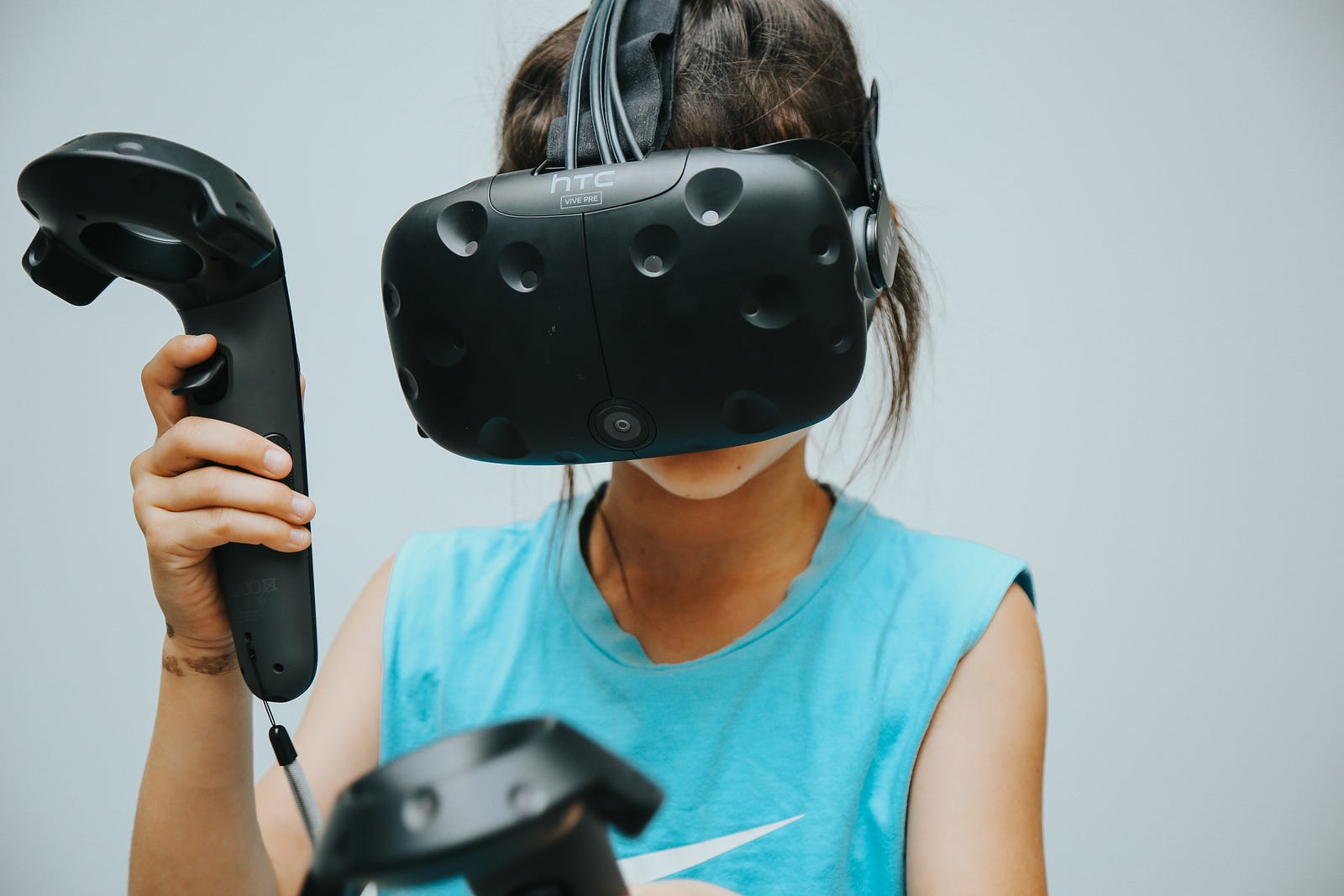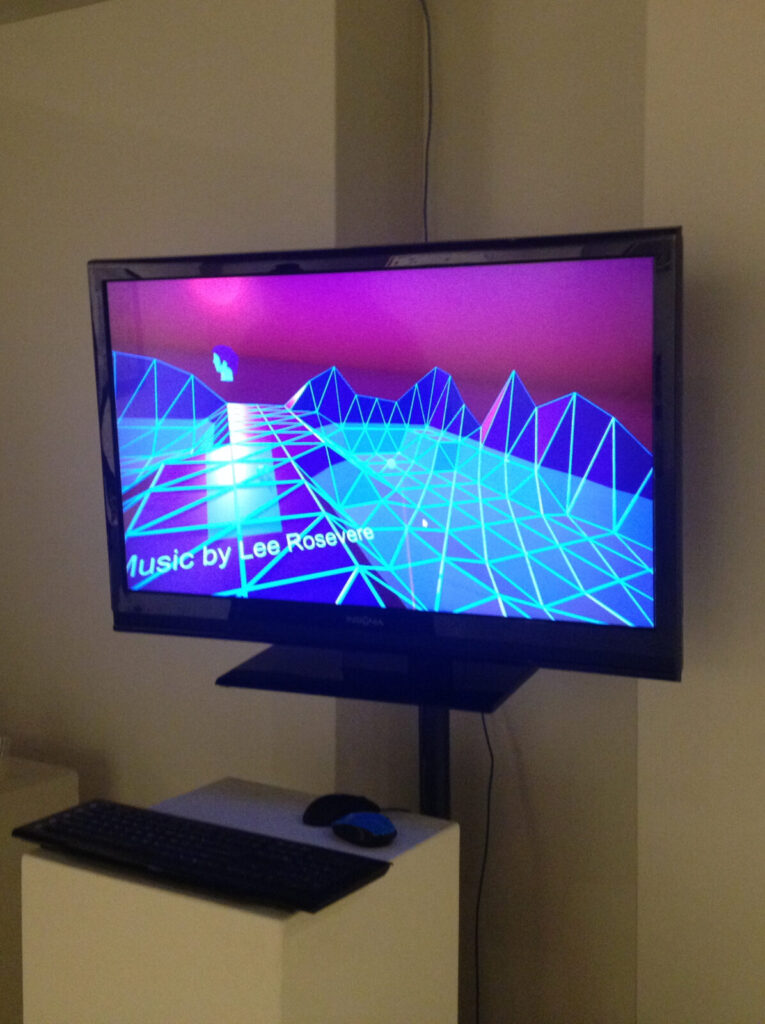As is often the case, the appearance of new technology requires a reassessment of the ways art and art practice are defined. For HVREdev, a Lexington-based cooperative of game designers, developers, and artists, VR hardware offers opportunities to explore the intersections of technology, video games and art.
Part of the Studio 300 Digital Arts and Music Festival which showcased such projects in venues across Lexington, the Morlan Gallery at Transylvania University presented Senses of Place: VR featuring works by members of HVREdev and artists Dima Strakovsky and Richie Hoagland. These collaborative efforts attempt to push the boundaries of space, meaning, artist and audience.

Attending a recent interactive performance of HVRdev’s Dreams project, one couldn’t help considering the somewhat tired question, “Are video games art?” While the ten “dreams” appear more akin to interactive art installations cross-pollinated with tech demos, they provide a means for the viewer to investigate the limits of the medium. The dreams run the gamut from enclosed rooms with collections of interactive objects such as the toy room of Dustin Peerce’s Toys, or a child’s bedroom in Zach Hunt, Shea Rembold, and Shylo Shepherd’s Shadow Play to more objective-driven experiences.

Christopher Royse, Rembold, and Alexander Leverone’s Yennen’s Tale and Christona Hillard, Royse, Leverone, and Hunt’s SPAace resemble more traditional role-playing or puzzle games. Still others might be compared to rhythm or sound games, such as Rembold, Hunt, and Shepard’s bubble-popping game Bubbles or Sol Mates, a kind of life simulation and soundscape hybrid created by Royse, Hunt, Leonard Wedderburn, Vincent Mattingly, Rembold, and Leverone. Donning an HTC Vive headset, the viewer uses a wand-like controller to explore these experiences by entering rooms, touching and moving various objects, or observing situations that play out in response to viewer’s presence in the virtual environment.


One of the more fascinating aspects of this project lies in the method of its presentation. As the viewer looks around the virtual gallery space of Dreams, a sort of impossibly shaped room with ramps, high angled ceilings, columns and other features, various objects are encountered. Each dream is represented by one of these objects, metonymic models of their respective experiences. Pointing the wand at a floating series of geometric objects and pressing the wand’s trigger transports the viewer into SPAce. The viewer encounters a long hallway that opens up to room full of large objects including a candy dispenser, perfume bottles, and a crate full of jam jars. Interacting with the objects changes elements of the room, an effect the developers describe as similar to the 1990s computer point-and-click puzzle game Myst.
Back in the gallery lobby, interacting with a slightly open freestanding doorway takes the viewer into Shadow Play, a bedroom where the viewer, sitting on a canopy bed, can open and close curtains and turn on and off various lights revealing comforting, strange, and even sinister objects that might inhabit a child’s dream world. While each of the games can be experienced passively, active participation produces a slew of diverse experiences, interactivity being an integral component of medium and fertile ground for investigating the ways these games bend and redefine the traditional limits of the relationship between artist, audience, and artwork.

The question of the project’s artistic value, while not altogether explicit in the form or content of the individual games, is addressed through its muddling of real and virtual space. HVREdev’s ten dreams are accessed through a sort of virtual museum: each game represented by an object that, when interacted with, transports the viewer into the discrete virtual space of the individual dream. This virtual space is further nested with the space of the Morlan Gallery, which is also extended into the virtual worlds of Dreams.
And beyond that, the project is available for download via Google Play, and can be experienced anywhere and anytime using an android smartphone and Google Cardboard, a stripped-down VR headset. Though this iteration of the experience limits the viewer’s ability to move within the virtual spaces of Dreams, the functionality is identical. In a sense, the presentation of both Dreams and Strakovsky and Hoagland’s Virtual Realities in the gallery helps to contextualize the medium, in the traditional sense of its being an object on display in a gallery setting. But the real space of the gallery is only a starting point for both projects to explore the possibilities of art in the virtual realm.
[aesop_video width=”90%” align=”center” src=”vimeo” id=”235535141″ caption=”Documentation of "Virtual Realities" performance. Richie Hoagland and Dima Strakovsky. Plus, parents and children.” disable_for_mobile=”on” loop=”on” autoplay=”on” controls=”on” viewstart=”on” viewend=”on” revealfx=”off” overlay_revealfx=”off”]
Of course, the debate over video games and their relation to art is not new, but the appearance of and availability VR hardware, though still somewhat price-prohibitive, is providing a means for investigating the question directly as it relates to art as an encounter with art objects in a specific space. The difference here is that artists and developers like those in HVREdev no longer require the space of the traditional gallery or museum to legitimize their own art-making practices. Instead, they explore and innovate within their own virtual spaces.
The fact that Dreams is encountered both in the real space of the gallery and in its own self-contained virtual gallery lends both an urgency and opportunity to redraw the boundaries of art production to include a more a diverse host of people and practices. Even those that might not consider themselves artists in the traditional sense are using new media and technology to collaborate and produce compelling and challenging works of art.
To download and experience HVREdev’s “Dreams” visit https://goo.gl/3KHRkR or search “Dreams: a Virtual Reality Art Exhibit” on the Google Play store. The project requires an Android smartphone and the Google Cardboard app and headset.




